Jennifer Scoullar's Blog, page 16
March 1, 2014
Unaccustomed As I Am To Public Speaking …
 Are you a shy person? I am. I don’t like small talk, or parties or crowds, or my mobile phone. I do like time alone in the bush, working with horses and dogs, writing, reading … it doesn’t really matter. When I’m alone I’m at peace. One simple way to diagnose yourself is to take a free Myer Briggs personality test. I’m an INFJ which is apparently common among writers.
Are you a shy person? I am. I don’t like small talk, or parties or crowds, or my mobile phone. I do like time alone in the bush, working with horses and dogs, writing, reading … it doesn’t really matter. When I’m alone I’m at peace. One simple way to diagnose yourself is to take a free Myer Briggs personality test. I’m an INFJ which is apparently common among writers.
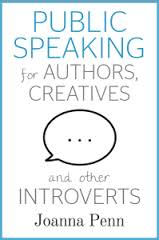 Introversion generally suits a writer’s life except in one respect – public speaking. These days part of an author’s platform includes giving talks: at launches, libraries, book stores, etc. I’m even a member of a terrific group called The New Romantics, four authors (including Kathryn Ledson, Kate Belle and Margareta Osborn) who present panel discussions on different aspects of writing and reading at writer’s festivals. This sort of thing does not come naturally to a shy person, or so I thought until I read Public Speaking for Authors, Creatives and other Introverts by Joanna Penn.
Introversion generally suits a writer’s life except in one respect – public speaking. These days part of an author’s platform includes giving talks: at launches, libraries, book stores, etc. I’m even a member of a terrific group called The New Romantics, four authors (including Kathryn Ledson, Kate Belle and Margareta Osborn) who present panel discussions on different aspects of writing and reading at writer’s festivals. This sort of thing does not come naturally to a shy person, or so I thought until I read Public Speaking for Authors, Creatives and other Introverts by Joanna Penn.
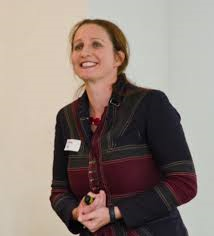
Joanna Penn Speaking
What a marvellous book! Joanna is an author, international speaker and entrepreneur based in London, England. She was voted as one of The Guardian UK Top 100 creative professionals 2013. She is also an introvert. The premise of her book is that public speaking is not an act of extroversion – shy people can excel at it too. When Joanna first started speaking, she developed a stage persona, a kind of ‘extroverted shell.’ But putting on an appearance cost her in energy, authenticity and even health. It was only when she embraced her introversion that she found her true voice as a speaker. Her handbook covers psychological aspects, as well as practical things like preparing and giving a speech, all from the perspective of an inherently shy person. She also gives a disarming personal account of how she increased her own confidence and learned to cope with nerves. I wish I’d had this book years ago! Her website The Creative Penn has lots of resources for writers as well.

February 22, 2014
In Praise of Paddock Trees
 Picturesque paddock trees, providing shade and shelter for stock and wildlife alike, are an iconic image of rural Australia. We’ve all seen sheep and cattle seeking protection from the baking summer sun, under the spreading boughs of a lone gum tree. Such old-growth giants can be centuries old, the last survivors of long-vanished forests. They will not last forever though. Thousands have been lost recently in Victoria’s Wimmera, for example. It’s important to properly appreciate their value, so we can protect those we have, and replace those we’ve lost.
Picturesque paddock trees, providing shade and shelter for stock and wildlife alike, are an iconic image of rural Australia. We’ve all seen sheep and cattle seeking protection from the baking summer sun, under the spreading boughs of a lone gum tree. Such old-growth giants can be centuries old, the last survivors of long-vanished forests. They will not last forever though. Thousands have been lost recently in Victoria’s Wimmera, for example. It’s important to properly appreciate their value, so we can protect those we have, and replace those we’ve lost.
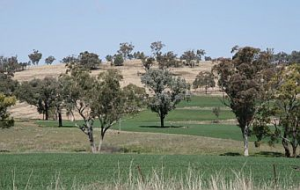 Paddock trees are much more than a shady spot for stock to camp under. They provide vital information about what existed prior to massive landscape change – genes, local provenance, microbial communities, soil fungi etc. They act as wildlife corridors, and help to preserve biodiversity and ecosystems. They form a leaf-litter layer for insects to live in. They provide forage, roosts and hollows for bats, birds, possums and koalas.
Paddock trees are much more than a shady spot for stock to camp under. They provide vital information about what existed prior to massive landscape change – genes, local provenance, microbial communities, soil fungi etc. They act as wildlife corridors, and help to preserve biodiversity and ecosystems. They form a leaf-litter layer for insects to live in. They provide forage, roosts and hollows for bats, birds, possums and koalas.
Buloke 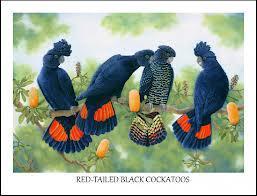 trees, for example, are the preferred food tree for endangered south-eastern Red-tailed Black Cockatoos, but less than two percent of this important food species remains. It takes a hundred years for a Buloke (a type of casuarina) to provide a decent feed, and they are not being replaced at a high enough rate to support Red-tailed Black-Cockatoos into the future. Click here to find out more about a wonderful recovery project aimed at protecting these magnificent birds.
trees, for example, are the preferred food tree for endangered south-eastern Red-tailed Black Cockatoos, but less than two percent of this important food species remains. It takes a hundred years for a Buloke (a type of casuarina) to provide a decent feed, and they are not being replaced at a high enough rate to support Red-tailed Black-Cockatoos into the future. Click here to find out more about a wonderful recovery project aimed at protecting these magnificent birds.
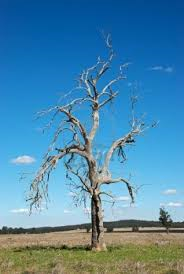 Paddock trees also reduce erosion and salinity, enrich soils and provide a seed source for regeneration – the benefit list goes on and on. If these trees continue to disappear, future generations will inherit a vastly different landscape. Landholders, governments … all of us who own or care for paddocks, must rise to the challenge of reversing tree loss in grazing and cropping landscapes, whether the result of active clearing or simple neglect. Old growth paddock trees have taken hundreds of years to grow. They cannot be replaced in a person’s lifetime – we need to protect what remains while we can.
Paddock trees also reduce erosion and salinity, enrich soils and provide a seed source for regeneration – the benefit list goes on and on. If these trees continue to disappear, future generations will inherit a vastly different landscape. Landholders, governments … all of us who own or care for paddocks, must rise to the challenge of reversing tree loss in grazing and cropping landscapes, whether the result of active clearing or simple neglect. Old growth paddock trees have taken hundreds of years to grow. They cannot be replaced in a person’s lifetime – we need to protect what remains while we can.

February 14, 2014
The Importance Of Author Identity
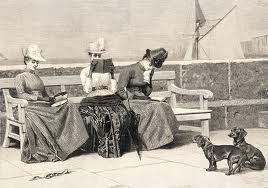 Welcome to my first joint cross-blog, which offers tips on writing, with particular emphasis on the romance genre. Every month, authors Kathryn Ledson, Sydney Smith and myself will get together to discuss some aspect of the writing craft. These posts will be concise, to allow room for discussion with our readers. We welcome your questions and comments; feel free to respond on this page.
Welcome to my first joint cross-blog, which offers tips on writing, with particular emphasis on the romance genre. Every month, authors Kathryn Ledson, Sydney Smith and myself will get together to discuss some aspect of the writing craft. These posts will be concise, to allow room for discussion with our readers. We welcome your questions and comments; feel free to respond on this page.
Kathryn Ledson is the author of Rough Diamond and Monkey Business (Penguin), part of the Erica Jewell series of romantic adventures. You can visit her website and find her blog at www.kathrynledson.com
Sydney Smith is a writing mentor, teacher and author of short stories, essays, and The Lost Woman, a memoir of survival. She is currently writing The Architecture of Narrative, a book about how to plot and structure fiction. She offers writing tips at www.threekookaburras.com. If you have a question on any aspect of writing, feel free to visit her at The Story Whisperer.
This month’s topic for discussion is:
Romance is a huge genre. What do you advise writers to do to get their romance novel noticed by editors and readers?
Kathryn: VOICE gives an author’s work a unique flavour. Like a fingerprint, the writer’s voice, however similar it may sound to others, and however much others might mimic it, is pure and unique. But without the writer’s PASSION, voice alone may be weak and bland. Passion breaks through the monotony of stories built on formula and shines a spotlight on that author’s work. In novel writing, my passion for humour and action in stories emerges almost without my permission. As a young child I adored adventure stories, reading everything Enid Blyton and Elyne Mitchell could produce. Through television and film I discovered my sense of humour. Even as a child I understood that irony (for me) is the funniest form of humour. So it’s not really a surprise that adventure and irony feature in my romance stories. My character and her actions give them form, which in turn gives my voice its strength and individuality. And this ultimately gives me, the author, a distinctive identity.
Jennifer: I agree with Kathryn that a distinctive identity is important to any author, especially a genre author. There are two aspects to this – one is voice, and the other is branding. Developing a unique voice is an organic process. It’s more than style, or vocabulary choice, or the decision to write in first or third person. It’s the authentic expression of you on the page – your feelings, dreams, passions and fears showing through in the words that you write. It takes courage to write so honestly, and not hide behind a derivative mask. But it’s worth it, because a truly original voice will always attract attention.
Branding is more strategic, but it still evolves from who you are on the inside. An important aspect of my novels, for instance, is a passion for nature. This became my brand, my point of difference, as my editor calls it. We all have a personal brand; it’s just a matter of recognising it. Romance is a crowded marketplace. Your brand will make you stand out from the pack, help you market your writing and attract a readymade readership of people who identify with your particular sub-genre.
Sydney: It’s interesting that both of you identify passion as an essential ingredient. Passion for the story you are writing, passion for your characters, your themes, passion for the things you want to communicate to readers about your concerns as writers – Jennifer for nature, and Kathryn who loves humour and adventure, which is as legitimate a concern as anything. The writer’s passion speaks clearly to the reader and helps to get them involved in the story. Other things have to be there to hold the reader’s attention, but passion is as essential as technical skill.
What do readers think? Do you like reading about certain themes? Or a certain kind of romance (adventure, comic, mystery? They come in so many hybrids.) What attracts you to a particular novel in a genre?

February 9, 2014
Phillip Island’s Penguins – A Conservation Success Story
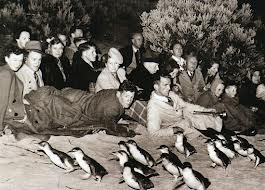 Recently I spent some time with my brother Rod, who lives on Phillip Island in Victoria. We went to see the Penguin Parade at Summerlands Beach, something I haven’t done for years. (Considering who my publisher is, it’s no wonder I love penguins!) This parade has been a popular tourist attraction since the 1920′s. Each night at sunset Little Penguins (commonly known as Fairy Penguins) return to shore after a day’s fishing. They surf in, then waddle up the beach to the safety of their homes in the sand dunes. At this time of year they also have chicks to feed. Visitors can watch the world’s smallest penguins from viewing stands and boardwalks without disturbing them. It is a fascinating glimpse into the secret life of a penguin colony. The conservation history of this colony is equally as fascinating.
Recently I spent some time with my brother Rod, who lives on Phillip Island in Victoria. We went to see the Penguin Parade at Summerlands Beach, something I haven’t done for years. (Considering who my publisher is, it’s no wonder I love penguins!) This parade has been a popular tourist attraction since the 1920′s. Each night at sunset Little Penguins (commonly known as Fairy Penguins) return to shore after a day’s fishing. They surf in, then waddle up the beach to the safety of their homes in the sand dunes. At this time of year they also have chicks to feed. Visitors can watch the world’s smallest penguins from viewing stands and boardwalks without disturbing them. It is a fascinating glimpse into the secret life of a penguin colony. The conservation history of this colony is equally as fascinating.
 The first inhabitants of Phillip Island were the aboriginal Bunurong tribe based around Western Port. They lived in harmony with the island’s penguins for many thousands of years. Over the last century of European settlement however, nine of the ten penguin breeding sites on Phillip Island disappeared. The last remaining rookery was on Summerlands Peninsula, on the edge of a residential subdivision. In 1985 the Victorian government made a far-sighted decision - in order to protect the penguins, further development of the subdivision would be prohibited and all the existing properties would be progressively purchased by the state.
The first inhabitants of Phillip Island were the aboriginal Bunurong tribe based around Western Port. They lived in harmony with the island’s penguins for many thousands of years. Over the last century of European settlement however, nine of the ten penguin breeding sites on Phillip Island disappeared. The last remaining rookery was on Summerlands Peninsula, on the edge of a residential subdivision. In 1985 the Victorian government made a far-sighted decision - in order to protect the penguins, further development of the subdivision would be prohibited and all the existing properties would be progressively purchased by the state.
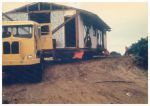
Removal of house from Summerland Estate
So began a twenty-five year effort to protect the Little Penguins of Summerland Peninsula. In June 2010 the government announced that the buy-back programme was complete. All houses on the estate had been removed or demolished. The land was revegetated and added to the Phillip Island Nature Park. As well as being a loveable icon for Victoria, the Penguin Parade generates $100 million dollars per year through tourism. What a perfect example of balancing the economy with the need to protect our environment!

February 1, 2014
The Writing Process Blog Hop: Writers Reveal Their Process
 It’s great to be taking part in this blog hop on The Writing Process. Thanks to the lovely Pamela Cook for tagging me. If you missed Pamela’s post last week you can find it here. Pamela is the author of Blackwattle Lake and Essie’s Way, published by Hachette. Apart from writing, Pamela is a teacher and mother of three gorgeous daughters. She also manages a menagerie of dogs, rabbits, birds, fish and horses and her favourite pastime (after writing) is riding her handsome quarter horse, Morocco.
It’s great to be taking part in this blog hop on The Writing Process. Thanks to the lovely Pamela Cook for tagging me. If you missed Pamela’s post last week you can find it here. Pamela is the author of Blackwattle Lake and Essie’s Way, published by Hachette. Apart from writing, Pamela is a teacher and mother of three gorgeous daughters. She also manages a menagerie of dogs, rabbits, birds, fish and horses and her favourite pastime (after writing) is riding her handsome quarter horse, Morocco.
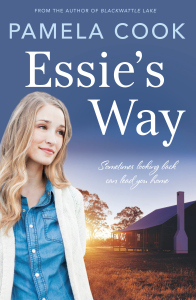 Pamela lives in the southern suburbs of Sydney and spends as much time as possible at her “other” home in Milton on the south coast of NSW. Being a country girl at heart and spending so much of her time around horses enticed Pamela to “write what you know” and she’s more than happy to now be a writer of Rural Fiction. Connect with Pamela via her Website, Twitter or Facebook.
Pamela lives in the southern suburbs of Sydney and spends as much time as possible at her “other” home in Milton on the south coast of NSW. Being a country girl at heart and spending so much of her time around horses enticed Pamela to “write what you know” and she’s more than happy to now be a writer of Rural Fiction. Connect with Pamela via her Website, Twitter or Facebook.
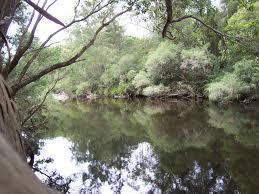 And now for my own responses to The Writing Process questions:
And now for my own responses to The Writing Process questions:
1) What am I working on?
I’m finishing copyedits for Billabong Bend, a star-crossed love story set in the riverlands. It will be released by Penguin in May of this year. My current work-in-progress is a novel set in cane country, near the southern tip of the Great Barrier Reef. It’s the story of newly-graduated zoologist, Zoe King, who moves from Sydney to work at the Kiawa marine park east of Bundaberg. She is charmed by the region’s beauty – by its rivers and rainforests. By its vast cane fields, sweeping from the foothills down to the rocky coral coast. And by its people – its farmers and fishermen, unhurried and down to earth, proud of their traditions. But when animals on the reef begin to sicken and die, Zoe discovers things are not always what they seem. Kiawa’s picture-postcard façade is beginning to crack. Can she convince the town of some ugly truths before it’s too late?
2) How does my work differ from others of its genre?
Like Pamela Cook I write rural fiction, currently a very popular genre. The main point of difference with my novels is a passion for the plants, animals and birds of the bush. This shines through in authentic stories set in Australia’s magnificent wild places, with various environmental themes at their heart.
3) Why do I write what I do?
I’ve always enjoyed a deep affinity with nature, and I channel my passion for the environment into my books. The natural world is full of drama, risk and exquisite beauty – perfect fodder for a novelist! I also enjoy an old-fashioned love story. For me, a good romance is not just about two people falling for each other. The original, medieval concept of a romance always involved a quest, and I think a modern one should too – it is the heroine’s search for herself. For until a character discovers her authentic core, she can’t genuinely connect with another person. So I like to show a woman coming into her strength and fullness as a human being.
4 ) How does my writing process work?
) How does my writing process work?
I’ve written six novels now, and am beginning my seventh. My first manuscript took more than two years to write. Of course you don’t know quite what you’re doing with a first novel, but you learn a lot about the craft along the way. Once I was published I had to be more practical about my process in order to meet deadlines. Although I’m a pantster at heart, I now plan a lot more, using a loose, three act structure. This plan is flexible however, and doesn’t prevent the story from evolving organically. With my new novel I plan to write 1,000 words a day, five days a week. Let’s see how I go!
Next week two wonderful writers share their thoughts on the writing process:
Kate Belle is a multi-published author who writes dark, sensual contemporary women’s fiction. She lives, writes and loves in Melbourne, juggling her strange, secret affairs with her male characters with her much loved partner and daughter and a menagerie of neurotic pets. Her first book, The Yearning, was released in 2013 to rave reviews. Her second, Being Jade is due for release in June 2014 (Simon & Schuster Australia). She blogs regularly at The Ecstasy Files and as a guest to whoever will have her.
Blog/website: http://www.ecstasyfiles.com
Facebook: http://www.facebook.com/katebelle.x
Twitter: @ecstasyfiles https://twitter.com/ecstasyfiles
Goodreads: http://www.goodreads.com/author/show/6572571.Kate_Belle
The Reading Room: http://www.thereadingroom.com/kate-belle/ap/2394119
Kathryn Ledson has worked as a PA in the corporate world, for Hayman Island’s PR team, and as Peter Ustinov’s PA during his Australian tour. She has also been on the road with rock bands Dire Straits and AC/DC. She now works as a freelance editor, but her passion is writing popular fiction for Penguin. She is the author of Rough Diamond and the newly released Monkey Business. Connect with Kathryn via her Website , Facebook or Twitter
Congratulations to Karen Stalker for winning a signed copy of Currawong Creek in the Australia Day prize draw, and thanks to everybody else for entering! Karen, I’ll send you an email shortly.

January 24, 2014
Australia Day Blog Hop And Giveaway
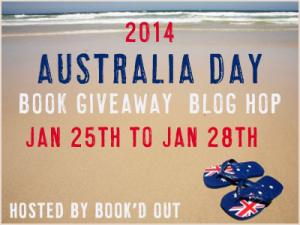 For this Australia Day Blog Hop post I’d like to celebrate the work of Elyne Mitchell – a quintessentially Australian author, and my earliest and best-loved writing inspiration. My second novel Brumby’s Run was influenced by her work, and being shortlisted for the Elyne Mitchell Rural Writing Award was one of my greatest thrills. The Silver Brumby series is ostensibly for children, but many adults like myself still adore them. These stories are filled with drama, magical prose and a deep, abiding love for the glorious upper Murray region where Elyne lived for most of her life.
For this Australia Day Blog Hop post I’d like to celebrate the work of Elyne Mitchell – a quintessentially Australian author, and my earliest and best-loved writing inspiration. My second novel Brumby’s Run was influenced by her work, and being shortlisted for the Elyne Mitchell Rural Writing Award was one of my greatest thrills. The Silver Brumby series is ostensibly for children, but many adults like myself still adore them. These stories are filled with drama, magical prose and a deep, abiding love for the glorious upper Murray region where Elyne lived for most of her life.
‘These mountains … are symbols of high adventure, of an ineffable beauty. My feeling for them has grown and grown, until they possess me and have written themselves into my heart.’ Elyne Mitchell
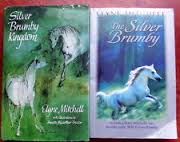 Nobody who has read her books could doubt this for a second. There is something utterly compelling about her writing. It draws you into a vast, wild landscape and loses you there. Here is a short excerpt from Silver Brumby’s Daughter. There are shades of Dylan Thomas in its evocative, lilting prose.
Nobody who has read her books could doubt this for a second. There is something utterly compelling about her writing. It draws you into a vast, wild landscape and loses you there. Here is a short excerpt from Silver Brumby’s Daughter. There are shades of Dylan Thomas in its evocative, lilting prose.
‘Kunama could feel the darkness coming as though it were something alive, something she could touch, a voice she could hear. Up the darkness crept, whispering from the gullies, the clefts, the gorges. It seemed to slide up the Valentine hills, seep like a tide round the corner into their valley, lap at the horses’ legs, enfold them, whispering, and at last only the sky held light, and the mountains and ridges were dark against it.’
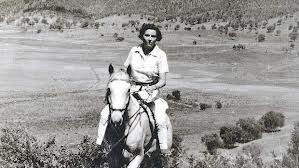 Elyne herself was the archetypal rural woman and a real hero of mine. Apart from being a gifted writer, Elyne was also a wife, mother, station owner, accomplished horsewoman, stockhorse breeder, naturalist and champion skier. She faced and survived many disasters – including the death of one of her children. Elyne wrote twenty-four novels and nine non-fiction books, many of which foreshadowed the rise of the environmental movement. She was a woman far ahead of her time. No wonder Australians everywhere have taken her tales of the high country straight to their hearts.
Elyne herself was the archetypal rural woman and a real hero of mine. Apart from being a gifted writer, Elyne was also a wife, mother, station owner, accomplished horsewoman, stockhorse breeder, naturalist and champion skier. She faced and survived many disasters – including the death of one of her children. Elyne wrote twenty-four novels and nine non-fiction books, many of which foreshadowed the rise of the environmental movement. She was a woman far ahead of her time. No wonder Australians everywhere have taken her tales of the high country straight to their hearts.
For a chance to win a copy of my latest novel, Currawong Creek, just leave a comment telling me an Australian book you enjoyed when you were young. Entries close midnight on January 28th. (Aust and NZ entries only) Winners will be announced on Feb 2nd. Click here to visit other Australia Day Blog Hop participants, and for the chance to win more great prizes.

January 18, 2014
The Tragedy Of Taiji Cove
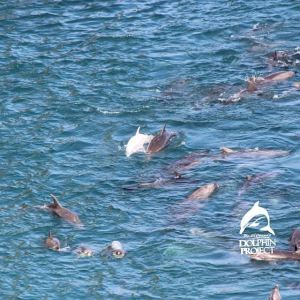 My new book has a dolphin character, Mirrhi, a young female who is rescued and nursed back to health after being struck by a boat. Writing Mirrhi and researching dolphin behaviour has made me sadder than ever at the tragedy unfolding right now in Japan’s infamous Taiji Cove. This annual butchery of thousands of migrating dolphins and porpoises was brought to international attention by a documentary film The Cove. It was awarded the Academy Award for Best Documentary Feature in 2010, but the slaughter continues.
My new book has a dolphin character, Mirrhi, a young female who is rescued and nursed back to health after being struck by a boat. Writing Mirrhi and researching dolphin behaviour has made me sadder than ever at the tragedy unfolding right now in Japan’s infamous Taiji Cove. This annual butchery of thousands of migrating dolphins and porpoises was brought to international attention by a documentary film The Cove. It was awarded the Academy Award for Best Documentary Feature in 2010, but the slaughter continues.
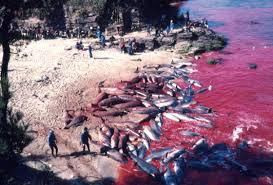 Yesterday five separate pods of dolphins were driven into Taiji Cove - two hundred and fifty dolphins, including a white albino calf. Cove monitors are calling this poor little dolphin “Angel.” So what will happen to Angel? She has been taken from her mother to the Taiji Whale Museum. This is particularly foolish as the calf’s likelihood of survival in captivity would be enhanced if the mother was with her. The Museum is owned by the Taiji town government and brokers dolphins all over the world, including providing dolphins for the one hundred or so dolphinariums in Japan. Angel’s mother and hundreds like her will be slaughtered and sold for meat, while Angel sits in a tank on display.
Yesterday five separate pods of dolphins were driven into Taiji Cove - two hundred and fifty dolphins, including a white albino calf. Cove monitors are calling this poor little dolphin “Angel.” So what will happen to Angel? She has been taken from her mother to the Taiji Whale Museum. This is particularly foolish as the calf’s likelihood of survival in captivity would be enhanced if the mother was with her. The Museum is owned by the Taiji town government and brokers dolphins all over the world, including providing dolphins for the one hundred or so dolphinariums in Japan. Angel’s mother and hundreds like her will be slaughtered and sold for meat, while Angel sits in a tank on display.
 Dolphin hunting in Taiji must be stopped, and the global marine park industry should be in the forefront of these efforts. Instead, dolphinariums subsidise the hunts by paying top dollar for captive dolphins like Angel, while her mother is butchered. They should be ashamed of themselves. Can this exploitation & brutality really be allowed to happen in the HOST NATION of the 2020 Olympic Games?
Dolphin hunting in Taiji must be stopped, and the global marine park industry should be in the forefront of these efforts. Instead, dolphinariums subsidise the hunts by paying top dollar for captive dolphins like Angel, while her mother is butchered. They should be ashamed of themselves. Can this exploitation & brutality really be allowed to happen in the HOST NATION of the 2020 Olympic Games?
What can we do?
Contact the Tokyo 2020 Organizing Committee via their Twitter or Facebook accounts to let them know that this is not acceptable.
Join the TWEETSTORM, instructions & pre-written tweets are ready for you to click on, to get this story into the mainstream media.
Visit The Dolphin Project or Sea Shepherd’s Cove Guardians for more information. Many dolphin lives are depending on our help.

January 11, 2014
Pilyara’s New Horse – Star
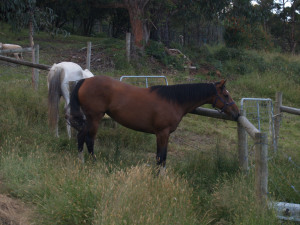 Everything has taken a back seat lately due to Pilyara’s latest acquisition – a new horse. I’ve always been a staunch advocate of Australian Stock Horses. Possibly the world’s most versatile horse and descended from the legendary Walers, they are often referred to as ‘the breed for every need’. Bred for Australian conditions, stock horses are fine working and performance animals, renowned for their temperament, endurance, resilience and strength. But I’m also an admirer of warmbloods – middle-weight performance horses originating in Europe. They are somewhere in the middle between heavy draft animals (cold bloods) and light saddle horses such as thoroughbreds, stock horses and Arabians (hot bloods). So when a lovely half-stock horse, half-warmblood mare came on the market, I couldn’t resist!
Everything has taken a back seat lately due to Pilyara’s latest acquisition – a new horse. I’ve always been a staunch advocate of Australian Stock Horses. Possibly the world’s most versatile horse and descended from the legendary Walers, they are often referred to as ‘the breed for every need’. Bred for Australian conditions, stock horses are fine working and performance animals, renowned for their temperament, endurance, resilience and strength. But I’m also an admirer of warmbloods – middle-weight performance horses originating in Europe. They are somewhere in the middle between heavy draft animals (cold bloods) and light saddle horses such as thoroughbreds, stock horses and Arabians (hot bloods). So when a lovely half-stock horse, half-warmblood mare came on the market, I couldn’t resist!
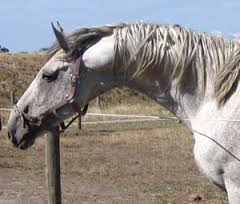
BFD Riptide, Star’s sire
Star’s dam carries the great stockhorse bloodlines of Gundy Bruce and the world-renowned Souvenir via Victory II. Her sire is a Holsteiner, thought to be the oldest of warmblood breeds, tracing back to the 13th century. Riptide BFD, carries a double cross of the imported champion Romedio via Mountbatten (Grand Prix dressage & US Olympic Team listed) and Rembrandt (showjumper).
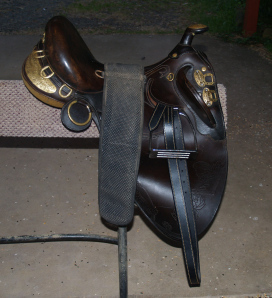 The only reason I could afford such a well-bred mare, is because she didn’t reach the desired height of 16 hh. Anyway, I’m besotted and have been spending all my time with her. (Hope the other horses don’t get jealous!) I even spent New Year’s Eve cleaning horse gear, and getting my father’s beautiful old stock saddle in top shape for her. So I hereby dedicate this post to Star, and now I’m off to the stables again …
The only reason I could afford such a well-bred mare, is because she didn’t reach the desired height of 16 hh. Anyway, I’m besotted and have been spending all my time with her. (Hope the other horses don’t get jealous!) I even spent New Year’s Eve cleaning horse gear, and getting my father’s beautiful old stock saddle in top shape for her. So I hereby dedicate this post to Star, and now I’m off to the stables again …

January 1, 2014
A New Year With Pamela Cook
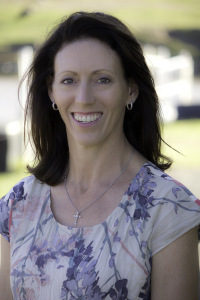 Please welcome successful author Pamela Cook back to Pilyara. What an auspicious way to begin the new year! In addition to being a novelist, Pamela teaches writing. She’s also a horse lover, which means we have a lot in common. (The name of her blog is Flying Pony) Pamela’s latest release, Essie’s Way, is a touching story about finding yourself and learning from past mistakes. Today she talks to us about the importance of setting and place in her books.
Please welcome successful author Pamela Cook back to Pilyara. What an auspicious way to begin the new year! In addition to being a novelist, Pamela teaches writing. She’s also a horse lover, which means we have a lot in common. (The name of her blog is Flying Pony) Pamela’s latest release, Essie’s Way, is a touching story about finding yourself and learning from past mistakes. Today she talks to us about the importance of setting and place in her books.
‘Thanks so much for having me on your blog, Jennifer. Setting and a sense of place are very important in my writing. When I began my first novel, Blackwattle Lake, I started with an image of a place, and a character in that place: a woman standing at the gate of a horse property. I had no story, no outline and no idea what was going to happen but the strength of that image and that setting pulled me through.
The setting for that novel is a mixture of two places: the riding ranch where we agist our horses, at Darkes Forest just south of Sydney … and the area around Milton, about two hours further south. We have a holiday house there at Little Forest and it’s my favourite place in the world. Somehow I manage to while away hours and hours there doing very little.
I’ve been holidaying on the NSW south coast all my life and it’s wonderful to now be able to share it with my daughters. And with my readers. The south coast is more untamed and a little wilder than the north – there are so many places where you can escape and feel completely isolated. Although the water is colder, it’s clear and clean and the beaches are blissfully empty (apart from school holidays of course) which is a huge contrast to the crowds on Sydney beaches in summer.
Essie’s Way also began with an image, but this time of an older woman who was playing the violin on the verandah of a shack near the ocean. Although I didn’t have a specific place in mind the stretch of beach I imagined was deserted and surrounded by bush. As the story progressed and the fragments came together, the place in my mind became one with a beach bookended by headlands, a very small town that only comes to life in the tourist season and farmlands close to the ocean. Thanks to trusty Google earth, I found a place that roughly fitted the description, packed my dog Bridie in the car and (just like Miranda, the main character in the book) headed south. While I was familiar with the south coast I hadn’t been to this particular place before but when I arrived at Potato Point I wasn’t disappointed. The “town” if it could be called one, and the beach fitted the image in my head perfectly.
To anyone else the resemblance might not be the same but walking on the windswept beach, wandering across the rock platforms I could just picture Esther standing there, fishing rod in hand, gazing out at the stormy blue ocean. There was no shack on the cliff and there were no horses grazing in paddocks nearby but it didn’t take much to imagine. The sense of alone-ness and freedom I felt standing on the beach were the same feelings I wanted Miranda to have when she visits the beach in search of the grandmother she’d always thought to be dead. Miranda is a city girl, a lawyer with a busy job and lifestyle and not much time to connect with herself. It’s here in Pelican Point (the fictional place in Essie’s Way, that she’s able to find some sense of peace and start to really think about the direction she’s taking in life.
There are a few city locations in Essie’s Way too – Miranda lives in Erskineville and hangs out in Newtown and the book opens with her trying on a wedding gown at a store in the QVB.
But it’s the rural locations that really inspire me. I love writing about the way place impacts on character and I hope to do more of that in my next book. At the moment I’m not sure exactly where it will be set but there’s a pretty good chance it’ll be somewhere down south and there’s an even better chance I’ll be taking off on a road trip to do a little research!’
 Essie’s Way – A captivating story of family, love and following your heart, from the author of Blackwattle Lake.
Essie’s Way – A captivating story of family, love and following your heart, from the author of Blackwattle Lake.
Miranda McIntyre thinks she has it all sorted. A successful lawyer, she s planning her wedding and ticking off all the right boxes. When searching for something old to go with her wedding dress she remembers an antique necklace from her childhood, but her mother denies any knowledge of it. Miranda is sure it exists. Trying to find the necklace, she discovers evidence that perhaps the grandmother she thought was dead is still alive.
Ignoring the creeping uncertainty about her impending marriage, and the worry that she is not living the life she really wants, Miranda takes off on a road trip in search of answers to the family mystery but also in search of herself. Ultimately, she will find that looking back can lead you home.
Connect with Pamela:
Webpage: www.pamelacook.com.au
Facebook: http://www.facebook.com/PamelaCookAuthor
Twitter: @PamelaCookAU

December 19, 2013
Pantsters and Pitches
I’ve finished the edits for Billabong Bend, and am having a break from writing. Instead I’m riding my horse, pulling up ragwort in the paddocks and generally enjoying the beauty on offer here at Pilyara. Writing is never very far from my thoughts though, for a new novel is brewing.
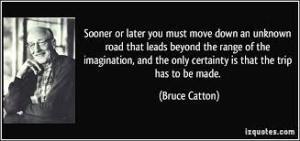 I’m a pantster at heart. My stories evolve organically. I’d get bored if I already knew everything that was going to happen – and it seems I’m in good company!
I’m a pantster at heart. My stories evolve organically. I’d get bored if I already knew everything that was going to happen – and it seems I’m in good company!
“Plot is, I think, the good writer’s last resort, and the dullard’s first choice.” ~Stephen King in On Writing
“Remember: Plot is no more than footprints left in the snow after your characters have run by on their way to incredible destinations. Plot is observed after the fact rather than before. It cannot precede action. It is the chart that remains when an action is through.” ~Ray Bradbury
 Ha, take that plotters! :) However the realities of commercial publishing make a degree of planning essential, especially when you’re pitching an unwritten book as I’m doing for the first time. Writing an outline is always tricky, but what if you don’t know precisely what happens yourself? I like to start with a short synopsis, 120 words or so. This can be lengthened or abbreviated as needed. The most useful pitch advice I ever received was a simple formula. This is a story about …….. who wants more than anything to ……… but can’t because ………. ‘If your story doesn’t fit into this template, you don’t have one.’ And my teacher was right. This breaks the narrative down to its bare bones – character, goal and conflict. Take The Wizard Of Oz for example. It’s a story about a little girl named Dorothy, who wants more than anything to go home, but can’t because she’s stuck in a strange land. I used this formula when I pitched my first novel Brumby’s Run to Penguin. ‘It’s a story about a spoilt city girl named Samantha, who wants more than anything to build a fresh future in Victoria’s beautiful high country, but can’t because it means stealing her sister’s life.’ Worked like a charm
Ha, take that plotters! :) However the realities of commercial publishing make a degree of planning essential, especially when you’re pitching an unwritten book as I’m doing for the first time. Writing an outline is always tricky, but what if you don’t know precisely what happens yourself? I like to start with a short synopsis, 120 words or so. This can be lengthened or abbreviated as needed. The most useful pitch advice I ever received was a simple formula. This is a story about …….. who wants more than anything to ……… but can’t because ………. ‘If your story doesn’t fit into this template, you don’t have one.’ And my teacher was right. This breaks the narrative down to its bare bones – character, goal and conflict. Take The Wizard Of Oz for example. It’s a story about a little girl named Dorothy, who wants more than anything to go home, but can’t because she’s stuck in a strange land. I used this formula when I pitched my first novel Brumby’s Run to Penguin. ‘It’s a story about a spoilt city girl named Samantha, who wants more than anything to build a fresh future in Victoria’s beautiful high country, but can’t because it means stealing her sister’s life.’ Worked like a charm
 So now I need a pitch for my new novel.
So now I need a pitch for my new novel.
- I’m not too worried that I don’t know how it ends yet. Pitches for me have always worked best when they don’t tell the full story, but finish instead with a hook, an intriguing question.
- I’ll concentrate on character and plot, and never mention theme. As novelist Sophie Masson says, ‘Themes belong in English studies, not in novel outlines.’
- It will be my very best writing.
Merry Christmas to all my readers, and a heartfelt thank you for your support during the year. Here’s to a wonderful 2014!!!






